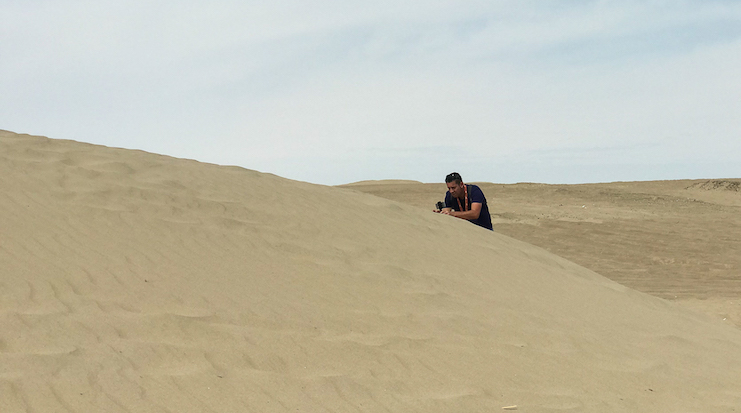Reporters out in the field will be all too familiar with the uncomfortable feeling of lugging hefty equipment around while reporting on a story. Chasing interviewees, doing pieces to camera and getting those vital shots should be their main priority, but it can often be disrupted by moving equipment about and wasting time with leads and battery packs.
Filming under the heat of the Peruvian desert, Omroep Brabant reporters Twan Spierts and Ronald Sträter decided to use iPhones instead of a camera crew during their coverage of the Dakar Rally, aiming to make reporting easier for themselves while getting closer, more creative shots that only a small camera could achieve.
"We stupidly brought a larger VJ camera, but we didn't use it at all – it took up space and weight in our suitcase that we could have used for something else," Spierts told Journalism.co.uk.
"I only use my phone to report most of the time, but I was a little anxious about not having a 'real camera' just in case. But I didn't take it out of its case."
The small news organisation has covered the event year on year, and this time decided to follow a competitor, Ebert Dollevoet, as he took part in the event, which started in Peru and crossed into Bolivia before finishing in Argentina.
Using an iPhone 7 Plus as the main camera and iPhone 6 as a second camera, the two reporters produced daily reports of his experiences for online audiences, compiling the day-by-day footage to create a television documentary.
"The phone got hot in the desert, but it didn't cause us any issues," he said.
"We did everything with 4G, constantly carrying out speed tests and checking the connection. It was unstable so sometime we'd be walking around to get connected, or go to a town nearby. One day we used the home Wi-Fi of a family living close to the competition."
The pair used Filmic Pro to record everything, and LumaFusion to edit, and were equipped with a variety of microphones, including an iRig Mic HD2 and a set of lavaliers, two phone grips (the Sevenoak PSC-1 and the Beastgrip), and a small Menik STL-9 light.
Spierts noted that a major benefit to using mobile phones was their ability to get shots that a larger, more traditional crew would achieve, but at a faster rate of publication, with one acting as the cameraman and the other as a reporter.

"Normally, we work alone and don't have the luxury of having a cameraman with us, so we liked working together so we could get footage faster," he said.
"The national broadcaster, who had the rights to air all the footage from the rally itself, were working with a traditional crew, spending time transferring everything via satellite, which they only had certain time slots to do – we were faster than them at all times.
"And that was important, because the time difference between us and the Netherlands was between four and six hours, depending on our position, which meant we had to push content out fast so people had a chance to see it before they went to bed."
The reporters regularly backed up their phones, freeing up space for more footage, using a MacBook on two external hard drives. Spierts told Journalism.co.uk that he was grateful for taking a range of light equipment, so they were immediately prepared when mics or lights failed.
"I was exhausted when the project was finished – but that was completely fine because we had everything we needed," he said.
Free daily newsletter
If you like our news and feature articles, you can sign up to receive our free daily (Mon-Fri) email newsletter (mobile friendly).
Related articles
- New project InOldNews wants to improve representation in video journalism
- 38 mojo apps from BBC trainer Marc Blank-Settle
- 15 online communities for journalists you should know about
- Ukrainian journalists use smartphones to tell stories of displaced communities
- 10 video editing apps for mobile journalists










